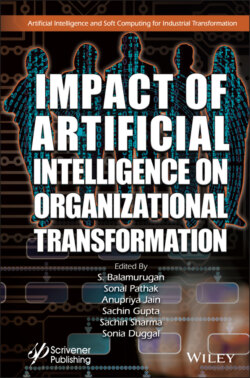Читать книгу Impact of Artificial Intelligence on Organizational Transformation - Группа авторов - Страница 98
4.2 Evolution of Artificial Intelligence
ОглавлениеAlthough AI is everywhere in the world from centuries, it came into fame after the 1950s. The term AI has been devised by John McCarthy and his co-founders in 1955. The AI introduced in 1950 and because of excessive expectation use of AI became immobile from 1970 to 1990s [1]. In the year 2012, a new revolutionary wave of AI-generated. Alan Turing has developed a testing technique to make a difference between the intelligence behavior of machines and humans. The test has been conducted including three components such as human foil, computer, and human interrogator. The role of the interrogator is to ask a series of questions repeatedly to the rest of the components (human foil and computer), and by this process, anyone can differentiate the humans from the computer. Monitor and keyboard play a key role during communication. This testing technique gave the strength of the idea of AI. The basic idea used in this technique was that humans are capable to store information and solve various problems whereas computers cannot do this.
Till 1974, machines could not able to store information, they face many difficulties in executing different commands. After 1974, more developed machines were introduced. These machines were ready to store more data as well as information.
In the 1980s, tools with large reserves and algorithmic commands have developed, the John Hop field and David Rumlhald implemented the “Deep Learning” method which made the device more independent in terms of independent-learning through previous understanding.
Figure 4.1 describes the year wise progressive evolution of Artificial intelligence is as follows:
Figure 4.1 Evolution of Artificial Intelligence.
Note: Three stages of Artificial Intelligence are three stages is Inference, Knowledge, and Learning period. It describes the various stages of implementation of Artificial Intelligence in previous years. It also shows the evolution of AI in a periodical and systematic manner from simple to complex technology. Source: https://www.researchgate.net/publication/323591839_State-of-the-Art_Mobile_Intelligence_Enabling_Robots_to_Move_Like_Humans_by_Estimating_Mobility_with_Artificial_Intelligence/figures?lo=1.
